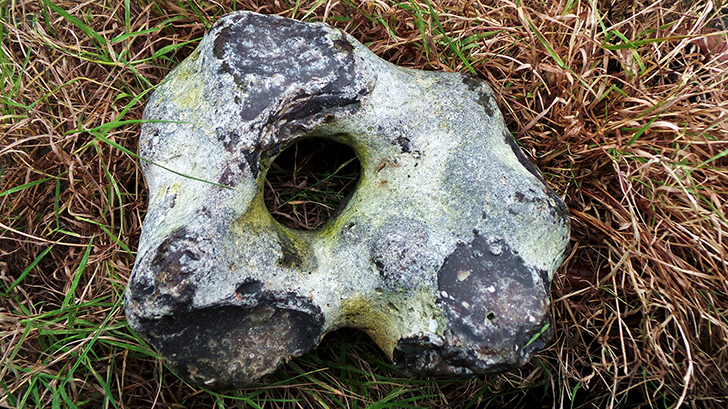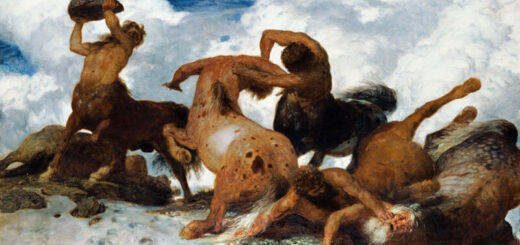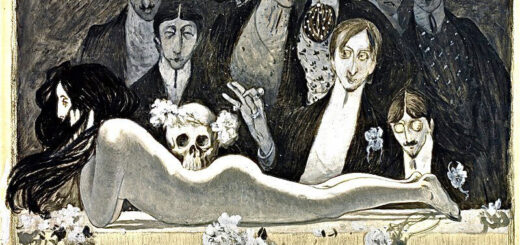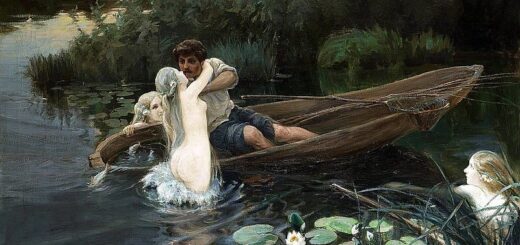The Enigmatic Adder Stone

An adder stone is a type of stone, usually glassy flint, with a naturally occurring hole through it. Such stones have been discovered by archaeologists in both Britain and Egypt. Commonly, they are found in Northern Germany on the coasts of the North and Baltic Seas.
Two folklore traditions exist regarding the origins of adder stones. One holds that the stones are the hardened saliva of large numbers of serpents massing together, the perforations being caused by their tongues.
The second claims that an adder stone comes from the head of a serpent or is made by the sting of an adder. Less romantic people tend to stick to the theory the adder stone can be any rock with a hole bored through the middle by water.
Various names for adder stones in Brittain
In Britain, they are also called dobbie stones. A dobbie stone was believed to offer protection against witches, fairies and (obviously) dobbies. For a dobbie – regionally varying to ‘dobie’ or ‘dobbs’ – is an old English name for a kind of spirit, whose nature and description varied from region to region.
In some places a dobbie was a ghost, in others a fairy. For example, in County Durham the Shotton Dobby was a shapeshifter, appearing variously as an unusually large dog, horse, cow or goose. It loved to frighten the hell out of travellers with its screeching, after which it quickly disappeared. It was also said its appearance foretold a death or a birth in the village.
In Lancashire, Dobbies were thought to be more ghostly, indeed any ghost seen outside or in the country side was dubbed a dobbie. And in North Lancashire it was said that the watery spirits, that haunted the caves and coves of Morecambe Bay, were dobbies.
In Cumberland, Sussex and some other places, dobbies are a playful but helpful fairy that attached itself to a household, and if welcomed, would perform useful chores, but if annoyed play pranks.
Adder stones or dobbie stones are also known as hag stones, witch stones, serpent’s eggs, snake’s eggs, or Glain Neidr in Wales, milpreve in Cornwall, adderstanes in the south of Scotland and Gloine nan Druidh (“Druids’ glass” in Scottish Gaelic) in the north. In Egypt they are called aggry or aggri.
Adder stone was held in high esteem amongst the Druids. It was one of their distinguishing badges, and was accounted to possess the most extraordinary virtues.
Adder stones in Druidism
Adder stones were thought to possess magical abilities such as protection against eye diseases or evil charms, preventing nightmares, curing whooping cough, the ability to see through fairy or witch disguised and trapped, if looked at through the middle of the hole, and of recovery from snakebite.
The Glain Neidr or Maen Magi of Welsh folklore is also closely connected to Druidism. The Glain Neidr of Wales are believed to be created by a congress of snakes, normally occurring in spring, but most auspicious on May Eve.
Adder stone was held in high esteem amongst the Druids. It was one of their distinguishing badges, and was accounted to possess the most extraordinary virtues.
Adder stones in Russian folklore
In Russian folklore, adder stones were thought to be the homes of spirits called Kurinyi Bog. Kurinyi Bog were the guardians of chickens, and their stones were placed into farmyards to counteract the possible evil effects of the Kikimora (the wives of the Domovoi, the house spirits). Kikimora, who also guarded and took care of chickens, could often unleash misery upon hens they did not like by plucking out their plumes.
In Italy the adder stones were sacred to the witch goddess Diana, as we can read in Godfrey Leland’s Aradia – Gospel of the Witches by VAMzzz Publishing. ♦
© 2017 Benjamin Adamah
VAMzzz Publishing book:
The following text is an excerpts from Aradia, Chapter IV: The Charm of the Stones Consecrated to Diana, page 37.
To find a stone with a hole in it is a special sign of the favour of Diana. He who does so shall take it in his hand and repeat the following, having observed the ceremony as enjoined:
Invocation to the Holy-Stone
I have found
A holy-stone upon the ground.
O Fate! I thank thee for the happy find,
Also the spirit who upon this road
Hath given it to me;
And may it prove to be for my true good
And my good fortune!I rise in the morning by the earliest dawn,
And I go forth to walk through (pleasant) vales,
All in the mountains or the meadows fair,
Seeking for luck while onward still I roam,
Seeking for rue and vervain scented sweet,
Because they bring good fortune unto all.
I keep them safely guarded in my bosom,
That none may know it – ’tis a secret thing,
And sacred too, and thus I speak the spell:
“O vervain! ever be a benefit,
And may thy blessing be upon the witch
Or on the fairy who did give thee to me!”It was Diana who did come to me,
All in the night in a dream, and said to me:
“If thou would’st keep all evil folk afar,
Then ever keep the vervain and the rue
Safely beside thee!”Great Diana! thou
Who art the queen of heaven and of earth,
And of the infernal lands-yea, thou who art
Protectress of all men unfortunate,
Of thieves and murderers, and of women too
Who lead an evil life, and yet hast known
That their nature was not evil, thou, Diana,
Hast still conferred on them some joy in life.Or I may truly at another time
So conjure thee that thou shalt have no peace
Or happiness, for thou shalt ever be
In suffering until thou grantest that
Which I require in strictest faith from thee!
Aradia,
Gospel of the Witches
by Charles Godfrey Leland
English
ISBN 9789492355010
Paperback, book size 148 x 210 mm
174 pagesInterested? Click here…






